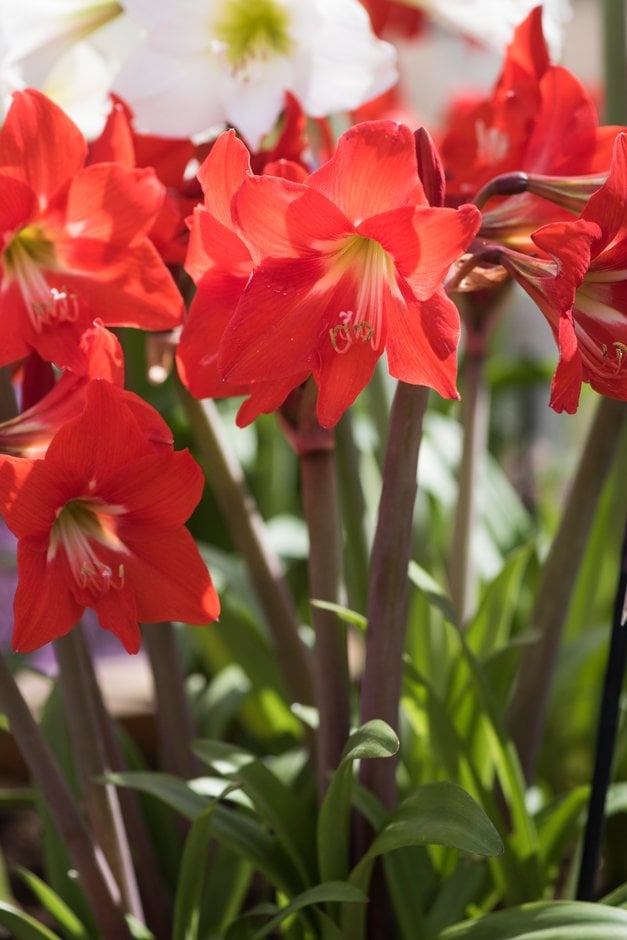Size
Ultimate height
0.5–1 metresTime to ultimate height
1–2 yearsUltimate spread
0.1–0.5 metresGrowing conditions
Moisture
Moist but well–drained, Well–drainedpH
Acid, Alkaline, NeutralColour & scent
| Stem | Flower | Foliage | Fruit | |
| Spring | Green Orange Red White | Green | ||
|---|---|---|---|---|
| Summer | ||||
| Autumn | ||||
| Winter | Green Orange Red White | Green |
Position
- Full sun
- Partial shade
Aspect
West–facing or South–facing or East–facing
Exposure
Sheltered Hardiness
H2Botanical details
- Family
- Amaryllidaceae
- Native to GB / Ireland
- No
- Foliage
- Deciduous
- Habit
- Columnar upright
- Potentially harmful
- Harmful if eaten. Wear gloves and other protective equipment when handling. Pets (dogs, cats): Harmful if eaten. For further information and contact numbers regarding pets, see the HTA guide to potentially harmful plants
- Genus
Hippeastrum are deciduous bulbous perennials with slightly fleshy, strap-shaped leaves and stout, leafless stems bearing umbels of large, funnel-shaped flowers usually in winter or spring
- Name status
Accepted
How to grow
Cultivation
Pot newly purchased bulbs from October to January so that two-thirds of the bulb remains above the surface and water in well. The appearance of leaves will signify that root activity has started and regular watering can begin. A good supply of water is required as soon as growth becomes vigorous with a temperature ideally in the region of 15-18°C and a sunny position. See hippeastrum cultivation for further information
Propagation
Propagate by removing offsets in autumn
Suggested planting locations and garden types
- Patio and container plants
- Cut flowers
Pruning
No pruning required
Pests
May be susceptible to bulb scale mite, large narcissus bulb fly and slugs and snails throughout the summer months
Diseases
Generally disease-free
Get involved
The Royal Horticultural Society is the UK’s leading gardening charity. We aim to enrich everyone’s life through plants, and make the UK a greener and more beautiful place.
